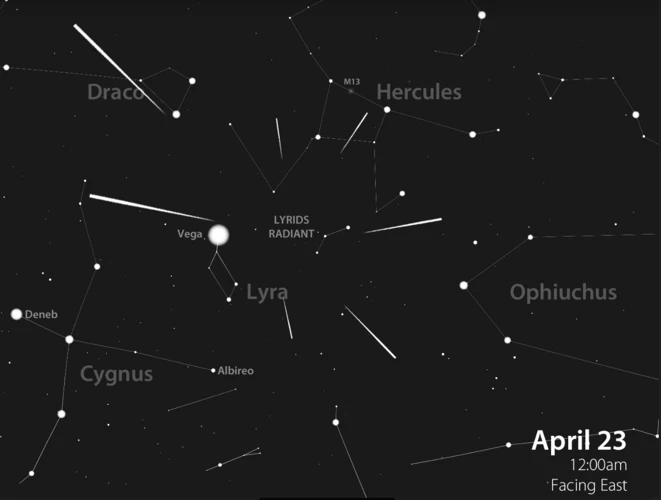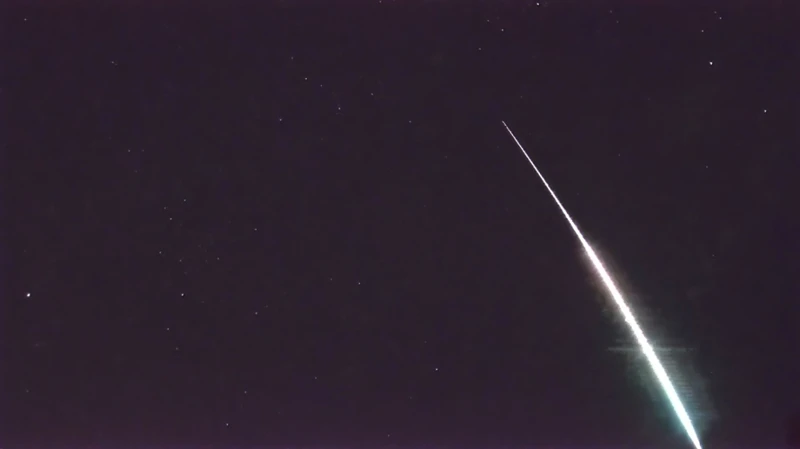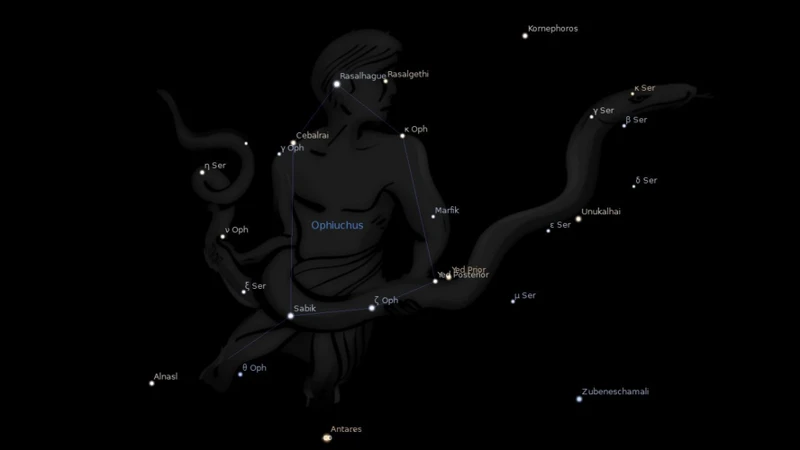Have you ever looked up at the night sky and witnessed a breathtaking display of shooting stars? These celestial events, known as meteor showers and meteor storms, captivate our imagination and fill us with awe. But what exactly is the difference between these two natural phenomena? In this article, we will delve into the fascinating world of meteor showers and meteor storms, exploring their definitions, characteristics, causes, observations, and notable examples. So, fasten your seatbelts and get ready for an exhilarating journey through the cosmos!
Contents
- Meteor Showers
- Meteor Storms
- Comparison
- Conclusion
-
Frequently Asked Questions
- What causes a meteor shower?
- Can meteor showers be seen all over the world?
- How often do meteor showers occur?
- Do meteor showers happen during the day?
- Do all meteor showers have names?
- Can you make a wish on a shooting star?
- Are meteor showers dangerous?
- Why do meteor showers have different intensities?
- Can you predict when a meteor shower will occur?
- Are meteor showers visible with the naked eye?
- References
-
Frequently Asked Questions
- 1. What is the difference between a meteor shower and a meteor storm?
- 2. How are meteor showers and meteor storms caused?
- 3. Can meteor showers and meteor storms be predicted?
- 4. How often do meteor showers and meteor storms occur?
- 5. What are some famous meteor showers?
- 6. Are meteor showers and meteor storms dangerous?
- 7. How can one observe a meteor shower or meteor storm?
- 8. Are meteor showers and meteor storms visible worldwide?
- 9. Can meteor showers and meteor storms be photographed?
- 10. How can meteor showers and meteor storms inspire and educate people?
- References
- Read More
Meteor Showers

Meteor showers are mesmerizing celestial events that light up the night sky with trails of shooting stars. These magnificent displays occur when the Earth passes through a trail of debris left behind by a comet or asteroid. During a meteor shower, the Earth’s atmosphere collides with these tiny particles, causing them to burn up and create the streaks of light we see from the ground. The Perseids meteor shower, which occurs every August, is one of the most famous and widely observed meteor showers. This annual spectacle originates from the Swift-Tuttle comet, and as Earth’s orbit intersects with the comet’s debris field, we are treated to a spectacular show of shooting stars. Whether you choose to witness the mysteries and symbolism or astrological significance of meteor showers, one thing is certain – they are truly awe-inspiring natural phenomena.
Definition and Characteristics
Meteor showers are celestial events characterized by a high concentration of meteors or shooting stars that appear to emanate from a specific point in the sky, called the radiant. These radiant points are typically named after the constellation in which they are located. One key characteristic of meteor showers is their regularity; they occur annually or at regular intervals due to the Earth passing through the same debris field left by a comet or asteroid. As the Earth moves along its orbit, it encounters these particles, which enter the atmosphere at high speeds and produce streaks of light as they vaporize. Meteor showers often have specific dates or time frames when they are most active, known as their peak. During the peak, observers can expect a higher number of meteors per hour, creating a dazzling spectacle. It is important to note that meteor showers are often named after the constellation from which they appear to originate, such as the Leonids from the constellation Leo or the Geminids from Gemini. These events can be observed with the naked eye, making them accessible to amateur astronomers and stargazers alike. So, whether you’re an enthusiast fascinated by planetary symbols or simply in awe of the wonders of the night sky, meteor showers offer a stunning and magical experience.
Cause and Observation
Meteor showers are caused by the Earth passing through the debris trail left behind by a comet or asteroid. When a comet gets close to the Sun, the heat causes it to release gas and dust, creating a trail of debris in its orbit. When the Earth intersects with this trail, the tiny particles enter our atmosphere at high speeds. Friction and compression heat these particles up, causing them to burn up and disintegrate, resulting in the streaks of light we see as shooting stars. The observation of meteor showers is a thrilling experience that requires certain conditions for optimal viewing. Finding a location away from city lights is crucial to minimize light pollution and enhance visibility. Meteor showers are best observed during the predawn hours when the sky is darkest. It is recommended to lie down on a comfortable surface, such as a blanket or reclining chair, and gaze up at the sky. Patience is key, as it may take some time for your eyes to adjust to the darkness and for the meteors to appear. It is also important to note that meteor showers can vary in intensity from year to year, so researching the specific shower you plan to observe can help manage expectations.
Famous Meteor Showers
When it comes to famous meteor showers, there are several annual celestial events that capture the attention of skywatchers around the world. Here are some notable meteor showers that have become well-known for their dazzling displays:
1. Perseids Meteor Shower: Taking place in August each year, the Perseids meteor shower is one of the most highly anticipated events for stargazers. Originating from the Swift-Tuttle comet, this shower puts on a spectacular show with its fast and bright meteors streaking across the night sky.
2. Leonids Meteor Shower: The Leonids meteor shower occurs in November, and it is renowned for its periodic meteor storms. This shower is associated with the comet 55P/Tempel-Tuttle and is notable for its occasional outbursts of intense meteor activity.
3. Geminids Meteor Shower: Happening in December, the Geminids meteor shower is known for its consistent and reliable performance year after year. It is often regarded as one of the best meteor showers to observe due to its high meteor rates and bright, colorful fireballs.
4. Orionids Meteor Shower: The Orionids meteor shower, occurring in October, is associated with Halley’s Comet. This shower boasts fast-moving meteors known for their long, persistent trails, creating a mesmerizing sight for sky enthusiasts.
5. Lyrids Meteor Shower: The Lyrids meteor shower, taking place in April, is one of the oldest known meteor showers. Known for its fast and bright meteors, the Lyrids often produce impressive fireballs that light up the night sky.
6. Draconids Meteor Shower: The Draconids meteor shower occurs in October and is associated with the periodic comet 21P/Giacobini-Zinner. While it usually has a low activity level, it has been known to produce meteor outbursts, resulting in an increased number of shooting stars.
These famous meteor showers provide skywatchers with wonderful opportunities to witness the beauty of space and the wonders of our universe. Whether you choose to observe the Perseids meteor shower or marvel at the Leonids meteor storm, each of these annual events offers a chance to connect with the mysteries of the cosmos.
Meteor Storms

Meteor storms, unlike meteor showers, are incredibly rare and awe-inspiring events that take the celestial spectacle to a whole new level. These exceptional occurrences are characterized by a dramatic increase in the number of meteors that streak through the sky within a short period of time. Meteor storms are caused by the Earth passing through a particularly dense and concentrated debris field left by a comet or asteroid. The increased intensity of meteor activity during these storms can be truly breathtaking, with hundreds or even thousands of meteors visible per hour. Although meteor storms are quite infrequent, they have been documented throughout history, leaving lasting impressions on those lucky enough to witness them. One notable example is the Leonid meteor storm of 1833, which produced an astounding display of meteors that was described as “stars falling like rain.” Meteor storms are rare celestial phenomena that remind us of the incredible vastness and beauty of the universe.
Definition and Characteristics
Meteor showers can be defined as celestial events in which a significant number of meteors, or shooting stars, are observed radiating from a particular point in the night sky. Let’s dive into the key characteristics of meteor showers:
1. Radiant Point: Meteor showers are named after the constellation or star cluster from which they appear to originate. This point is known as the radiant point. For example, the famous Perseids meteor shower seems to originate from the constellation Perseus.
2. Regular Occurrence: Meteor showers occur annually or at regular intervals when the Earth passes through the path of debris left behind by a comet or asteroid. As our planet intersects the debris stream, the particles enter the Earth’s atmosphere and create visible streaks of light.
3. Multiple Meteors: During a meteor shower, multiple meteors can be observed within a short period of time. These meteors are often composed of small particles, typically no larger than a grain of sand, which burn up upon entry into the Earth’s atmosphere.
4. Predictability: Meteor showers are well-documented and predictable events. Astronomers and enthusiasts can anticipate the peak times and dates of meteor showers, allowing them to plan observations for optimal viewing conditions.
5. Varying Intensity: The intensity of meteor showers can vary from year to year. Factors such as the density of the debris stream and the angle at which Earth intersects it can influence the number of visible meteors during a shower.
To summarize: Meteor showers are regular celestial events characterized by a radiant point, multiple meteors visible within a short period, predictability, and varying intensity. These captivating displays of shooting stars offer a fascinating glimpse into the vastness and beauty of the universe.
Cause and Observation
Meteor showers are caused by the Earth’s orbit intersecting with the debris left behind by comets or asteroids. As our planet travels around the Sun, it encounters these remnants, which are mostly made up of dust and small rocks. When the Earth passes through this debris field, particles enter the atmosphere at high speeds, causing friction and heat. This process is known as atmospheric entry, and it results in the particles vaporizing and creating streaks of light that we perceive as shooting stars.
Observing a meteor shower is a thrilling experience, and there are a few key factors to keep in mind to maximize your chances of seeing the most meteors. First, it is essential to find a location away from city lights to minimize light pollution. The darker the sky, the more visible the meteors will be. Additionally, timing is crucial. Each meteor shower has a peak period when the highest number of meteors can be observed. This peak time often occurs in the predawn hours, when the part of the Earth you are on is facing the direction of the incoming debris. Finally, patience is necessary when observing meteor showers. It can take time for your eyes to adjust to the darkness, and not every streak of light in the sky is a meteor. So relax, get comfortable, and enjoy the celestial show.
To track meteor showers, there are various resources available. Websites, apps, and astronomical organizations provide information on upcoming meteor showers, including their peak times and estimated hourly rates. By using these resources, you can plan your observation sessions and increase your chances of witnessing a spectacular display of shooting stars. So, prepare your blankets, find a suitable observing spot, and get ready to be amazed by nature’s fireworks.
Notable Meteor Storms
Notable Meteor Storms are extremely rare and spectacular events that surpass the intensity and frequency of regular meteor showers. One of the most renowned meteor storms in recorded history is the Leonids meteor storm of 1833. This event, also known as the “Night the Stars Fell,” astonished observers in North America as they witnessed an extraordinary number of meteors streaking across the sky. The storm produced an estimated 100,000 meteors per hour, creating an otherworldly spectacle. Another notable meteor storm occurred in 1966, again from the Leonids meteor shower. During this event, observers in Western United States reported rates of up to several thousand meteors per minute. The 2001 Leonids meteor storm was another unforgettable event, known for its incredible display of shooting stars. These meteor storms are exceptional occurrences, capturing the imagination of astronomy enthusiasts and researchers alike. The unpredictability and rarity of these meteor storms only add to their allure, making them cherished and sought-after experiences for stargazers around the world.
Comparison

When it comes to comparing meteor showers and meteor storms, there are several key differences to consider.
Intensity and Frequency: Meteor showers are regular events that occur annually or at predictable intervals as the Earth passes through the debris trail of a comet or asteroid. They typically produce a moderate number of meteors per hour, ranging from a few to a couple of hundred. On the other hand, meteor storms are much more intense and infrequent. These rare events involve an exceptionally high number of meteors, sometimes reaching thousands per hour, creating an astonishing spectacle in the night sky.
Size and Duration: Meteor showers tend to have a relatively small size and duration. They are localized events that usually last for a few days or weeks, with a narrow path of debris. In contrast, meteor storms encompass a larger area of the sky and can last for several hours or even days. Their size and duration make them even more extraordinary and memorable.
While both meteor showers and meteor storms offer stunning displays of shooting stars, the differences in intensity, frequency, size, and duration set them apart, making each experience unique and awe-inspiring.
Key Differences
When it comes to meteor showers and meteor storms, there are several key differences that set them apart. The first major difference lies in the intensity of the event. Meteor showers are characterized by a steady stream of shooting stars, with a peak rate usually ranging from 10 to 100 meteors per hour. On the other hand, meteor storms are much more intense, with peak rates exceeding 1,000 meteors per hour. This stark contrast in intensity makes meteor storms a truly spectacular phenomenon to witness.
Another important difference between meteor showers and meteor storms is their frequency. Meteor showers occur annually or sometimes multiple times throughout the year, following a predictable pattern associated with a specific comet or asteroid. They are generally reliable and can be observed with some degree of certainty. In contrast, meteor storms are rare and unpredictable events. They occur sporadically and without a fixed schedule, making them a delightful surprise for avid stargazers.
The third distinction can be found in the size and composition of the debris responsible for the meteor displays. Meteor showers are typically caused by smaller particles, often no larger than a grain of sand, that burn up completely in the Earth’s atmosphere. In contrast, meteor storms are attributed to larger and more substantial debris, sometimes as big as a pebble or even a small rock. These larger particles produce more brilliant and longer-lasting trails of light as they enter the atmosphere, creating a breathtaking display for those lucky enough to witness a meteor storm.
The key differences between meteor showers and meteor storms lie in their intensity, frequency, and the size of the debris involved. While meteor showers offer a steady stream of shooting stars with predictable occurrence, meteor storms captivate us with their intense displays of numerous meteors per hour. So, whether you’re planning to witness a reliable meteor shower or hoping for a rare meteor storm, the night sky promises to dazzle and inspire with its celestial wonders.
Intensity and Frequency
When comparing meteor showers and meteor storms, one key difference lies in their intensity and frequency. Meteor showers are known for their regular occurrence and predictable patterns. They happen annually or at specific intervals as the Earth passes through the debris field of a comet or asteroid. These showers tend to produce a moderate number of meteors per hour, ranging from a few to tens or even hundreds in the case of major showers. The intensity can vary, with some meteor showers being more subdued, while others are more vibrant and active. On the other hand, meteor storms exhibit a much higher intensity and frequency. These rare and extraordinary events occur when the Earth crosses paths with a particularly rich and dense debris stream. During a meteor storm, the number of meteors visible in the sky can skyrocket to hundreds or even thousands per hour. The heightened activity and frequency of shooting stars make meteor storms truly remarkable and memorable occurrences. However, it’s worth noting that meteor storms are infrequent and unpredictable, with many years or even decades passing between each occurrence. So, while meteor showers offer a more regular display, meteor storms provide an exceptional and awe-inspiring spectacle that is truly a sight to behold.
Size and Duration
When comparing the size and duration of meteor showers and meteor storms, significant differences become apparent. Meteor showers are typically composed of smaller debris, usually no larger than a grain of sand. These tiny particles burn up in the Earth’s atmosphere, resulting in the mesmerizing streaks of light we observe. Meteor showers usually last for several days, with the peak activity occurring during a specific timeframe.
Meteor storms, on the other hand, are characterized by a much larger influx of debris. During a meteor storm, the Earth passes through a dense concentration of particles, often originating from a comet or asteroid. This leads to an intensified display of shooting stars that can be far more spectacular than a regular meteor shower. Meteor storms can last for a shorter duration, sometimes even just a few hours, but the intensity of the meteor activity can be truly remarkable.
To put it into perspective, while a typical meteor shower might produce dozens or a few hundred meteors per hour, a meteor storm can result in thousands of meteors lighting up the sky. The size and duration of these celestial events contribute to the awe-inspiring and often once-in-a-lifetime experience they offer. So whether you’re seeking to marvel at the gentle beauty of a meteor shower or witness the magnificence of a meteor storm, both offer their own unique sizes and durations of celestial wonder.
Conclusion

In conclusion, meteor showers and meteor storms provide us with captivating displays of celestial beauty. While they both involve the entry of debris into Earth’s atmosphere, there are distinct differences between the two phenomena. Meteor showers are relatively common and occur annually as our planet passes through the debris trails of comets or asteroids. They are characterized by a consistent number of visible meteors per hour and have been observed and studied for centuries. On the other hand, meteor storms are rare and extraordinary events, with a significantly higher rate of meteors observed during a short period of time. These intense storms often result from encounters with dense debris streams or the fragmentation of a comet or asteroid. While meteor showers continue to enthrall skywatchers with their predictable displays, the unpredictability and rarity of meteor storms make them even more special and awe-inspiring. So, whether you take delight in the annual meteor showers or are fortunate enough to witness a meteor storm, these celestial events remind us of the vast and extraordinary universe we are a part of.
Frequently Asked Questions

What causes a meteor shower?
A meteor shower is caused when the Earth passes through a trail of debris left behind by a comet or asteroid. When these particles enter the Earth’s atmosphere, they burn up and create the streaks of light we see as shooting stars.
Can meteor showers be seen all over the world?
Yes, meteor showers can be seen from all parts of the world, as long as the sky is clear and there is minimal light pollution.
How often do meteor showers occur?
Meteor showers occur regularly throughout the year, but some are more notable than others. The frequency of meteor showers can vary, with some occurring annually, while others are periodic and can be seen once in several years or decades.
Do meteor showers happen during the day?
While it is possible for meteor showers to occur during the day, they are generally more visible in the night sky when there is less ambient light. However, certain meteor showers, like the Geminids, can sometimes be observed during the day under the right conditions.
Do all meteor showers have names?
No, not all meteor showers have names. Only the more well-known and significant meteor showers have been officially named and recognized.
Can you make a wish on a shooting star?
Although it is a popular belief and tradition to make a wish when you see a shooting star, it is purely a superstition and not based on factual evidence.
Are meteor showers dangerous?
No, meteor showers are not dangerous. The particles that create meteor showers are usually small and burn up in the Earth’s atmosphere before reaching the ground.
Why do meteor showers have different intensities?
The intensity of a meteor shower can vary depending on several factors, such as the size of the debris trail, the density of particles within the trail, and the angle at which the Earth passes through it.
Can you predict when a meteor shower will occur?
Yes, scientists and astronomers can predict when meteor showers will occur based on the known orbits of comets and asteroids that produce the debris trails.
Are meteor showers visible with the naked eye?
Yes, meteor showers are generally visible with the naked eye, especially during their peak activity when multiple shooting stars can be seen in a short period of time.
References
Frequently Asked Questions

1. What is the difference between a meteor shower and a meteor storm?
A meteor shower is a regular celestial event that occurs when Earth passes through the debris left behind by a comet, resulting in a predictable display of shooting stars. A meteor storm, on the other hand, is a rare phenomenon characterized by an intense and increased number of meteors within a short period.
2. How are meteor showers and meteor storms caused?
Meteor showers are caused by Earth’s orbit intersecting with the path of debris left behind by comets. As Earth passes through this debris, the particles burn up in the atmosphere, creating the streaks of light we see as shooting stars. Meteor storms, on the other hand, occur when Earth encounters a particularly dense pocket of debris, leading to a higher concentration of meteors.
3. Can meteor showers and meteor storms be predicted?
Meteor showers can be predicted with a high degree of accuracy. Astronomers have identified numerous recurring showers that happen at the same time each year. Meteor storms, however, are more difficult to predict since they rely on the chance encounter with a denser section of debris.
4. How often do meteor showers and meteor storms occur?
Meteor showers occur regularly and can be observed multiple times throughout the year. Some showers have specific peak dates, while others have more extended periods of activity. Meteor storms, on the other hand, are extremely rare and can occur only once every few decades or even centuries.
5. What are some famous meteor showers?
Some famous meteor showers include the Perseids, Leonids, Geminids, and Quadrantids. These showers are widely observed and have been studied for many years, allowing astronomers to predict their peak times and intensity.
6. Are meteor showers and meteor storms dangerous?
Meteor showers and meteor storms pose no direct danger to Earth or its inhabitants. The meteors burn up in the atmosphere before reaching the surface, resulting in harmless streaks of light. However, it is not advisable to directly stare at these events for long periods, as the brightness of the meteors can be intense.
7. How can one observe a meteor shower or meteor storm?
Observing a meteor shower or meteor storm requires finding a location away from city lights with a clear view of the sky. It is best to observe during the peak times when the number of visible meteors is highest. Patience and a reclined position are also key, as meteor activity can vary throughout the night.
8. Are meteor showers and meteor storms visible worldwide?
Yes, meteor showers and meteor storms can be visible from various parts of the world. However, visibility may be affected by factors such as local weather conditions, light pollution, and the shower’s radiant point—the area from which the meteors appear to originate.
9. Can meteor showers and meteor storms be photographed?
Photographing meteor showers and meteor storms can be challenging but not impossible. It requires a camera with manual settings, a tripod for stability, and a long exposure to capture the fast-moving meteors. Patience and multiple attempts may be necessary to capture a stunning meteor photo.
10. How can meteor showers and meteor storms inspire and educate people?
Meteor showers and meteor storms are awe-inspiring natural phenomena that can spark interest in astronomy and science. They provide an opportunity for people of all ages to marvel at the wonders of the universe and learn about the celestial objects that surround us. Observing these events encourages curiosity, exploration, and a deeper appreciation for our place in the cosmos.







